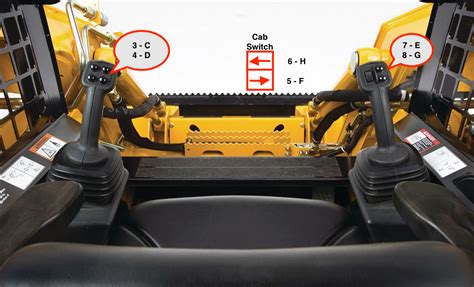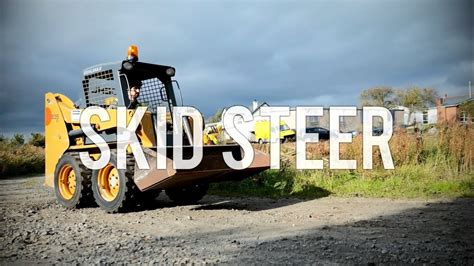steer direction of skid There are a few reasons cars skid, but it always happens because your car’s tires lose their grip on the road. Here are the most common reasons why your vehicle might skid. See more Find excavator grapples for sale that can handle various materials with ease and precision. SC Equipment offers rotating and hydraulic grapples for mini excavators, with 360° rotation, robust design, and high gripping force.
0 · types of skid steer controls
1 · skid steer operating instructions
2 · skid steer manual pdf
3 · skid steer instructional videos
4 · operating a skid steer loader
5 · operating a bobcat skid steer
6 · bobcat skid steer operation videos
7 · bobcat skid steer operating instructions
Learn how to efficiently dig footings with a mini excavator by following these three easy steps for precise and quick excavation. Key Takeaways. 1. Preparation: Mark footing locations accurately before digging. 2. Digging: Use a mini excavator with a 24-inch bucket for precise excavation. 3.
There are a few reasons cars skid, but it always happens because your car’s tires lose their grip on the road. Here are the most common reasons why your vehicle might skid. See more

If your car starts to skid, acting immediately to stop the skid is the most important thing you can do to prevent a crash. Here are the . See moreTo prevent a skid, the best thing you can do is drive carefully. Here are some tips you can use to prevent your car from skidding. 1. Avoid driving in dangerous conditions. If you . See moreWhile skidding is scary, as long as you can use the proper techniques to regain control of your vehicle, it’s often possible to regain control unscathed. We hope our best tips on steering your car after it starts skidding can help you stay safer on the road. See more How to Stop a Front Wheel Skid. Gently ease off of your car’s accelerator or brake. Steer your vehicle in the direction you want to go and see if you can regain traction. If you can’t stop the skid within several seconds, you’ll need to .
Learn how to avoid trouble on the road by driving smoothly and adjusting to conditions. If you find yourself in a skid, take your feet off the pedals and quickly turn the steering wheel in the direction you want to go.Learn how to regain control of your car when it starts to slide on slippery roads. Find out the difference between oversteer and understeer, and how to countersteer in both situations.
Front Wheel: Turning when the skid started? Ease off gas and straighten front wheels. When traction returns, steer gently in the direction you want to go. Rear Wheel: Look and steer where you want to go. As tires regain grip and vehicle straightens out, counter-steer slightly to avoid fishtailing. PREVENTIVE MEASURESLearn how to recover from a skid and avoid a spin by focusing on a visual target and adjusting your steering and braking. Find out the difference between front and rear tire skids and how to handle them.
When traction returns, steer gently in the direction you want to go. Look and steer where you want to go in a rear-wheel skid. As tires regain grip and your vehicle straightens out, counter-steer slightly to avoid fishtailing.
Learn how to handle a skid when driving on winter roads. If your rear wheels skid, steer in the direction you want to go and apply steady brakes. If your front wheels skid, shift to neutral and steer when traction returns.Learn how to handle a skid when your back tires lose traction with the road surface and try to move toward the front of your vehicle. Follow these steps: stay calm, take your foot off the pedals, gently steer in the direction you want to go, and don't oversteer. Learn the causes, prevention, and response of car skids. The correct response is to foot off the gas, foot off the brake, and steer gently in the direction of the skid.
Learn how to correct a rear-wheel skid by steering in the same direction as the skid and slowing the vehicle gently. Find out the causes, prevention and recovery techniques for other types of skids, such as acceleration, locked wheel and off-pavement skids. How to Stop a Front Wheel Skid. Gently ease off of your car’s accelerator or brake. Steer your vehicle in the direction you want to go and see if you can regain traction. If you can’t stop the skid within several seconds, you’ll need to . Learn how to avoid trouble on the road by driving smoothly and adjusting to conditions. If you find yourself in a skid, take your feet off the pedals and quickly turn the steering wheel in the direction you want to go.Learn how to regain control of your car when it starts to slide on slippery roads. Find out the difference between oversteer and understeer, and how to countersteer in both situations.
Front Wheel: Turning when the skid started? Ease off gas and straighten front wheels. When traction returns, steer gently in the direction you want to go. Rear Wheel: Look and steer where you want to go. As tires regain grip and vehicle straightens out, counter-steer slightly to avoid fishtailing. PREVENTIVE MEASURESLearn how to recover from a skid and avoid a spin by focusing on a visual target and adjusting your steering and braking. Find out the difference between front and rear tire skids and how to handle them.When traction returns, steer gently in the direction you want to go. Look and steer where you want to go in a rear-wheel skid. As tires regain grip and your vehicle straightens out, counter-steer slightly to avoid fishtailing.Learn how to handle a skid when driving on winter roads. If your rear wheels skid, steer in the direction you want to go and apply steady brakes. If your front wheels skid, shift to neutral and steer when traction returns.
Learn how to handle a skid when your back tires lose traction with the road surface and try to move toward the front of your vehicle. Follow these steps: stay calm, take your foot off the pedals, gently steer in the direction you want to go, and don't oversteer. Learn the causes, prevention, and response of car skids. The correct response is to foot off the gas, foot off the brake, and steer gently in the direction of the skid.

types of skid steer controls

bobcat t250 skid steer for sale

Browse a wide selection of new and used IHI 35V4 Mini (up to 12,000 lbs) .
steer direction of skid|types of skid steer controls